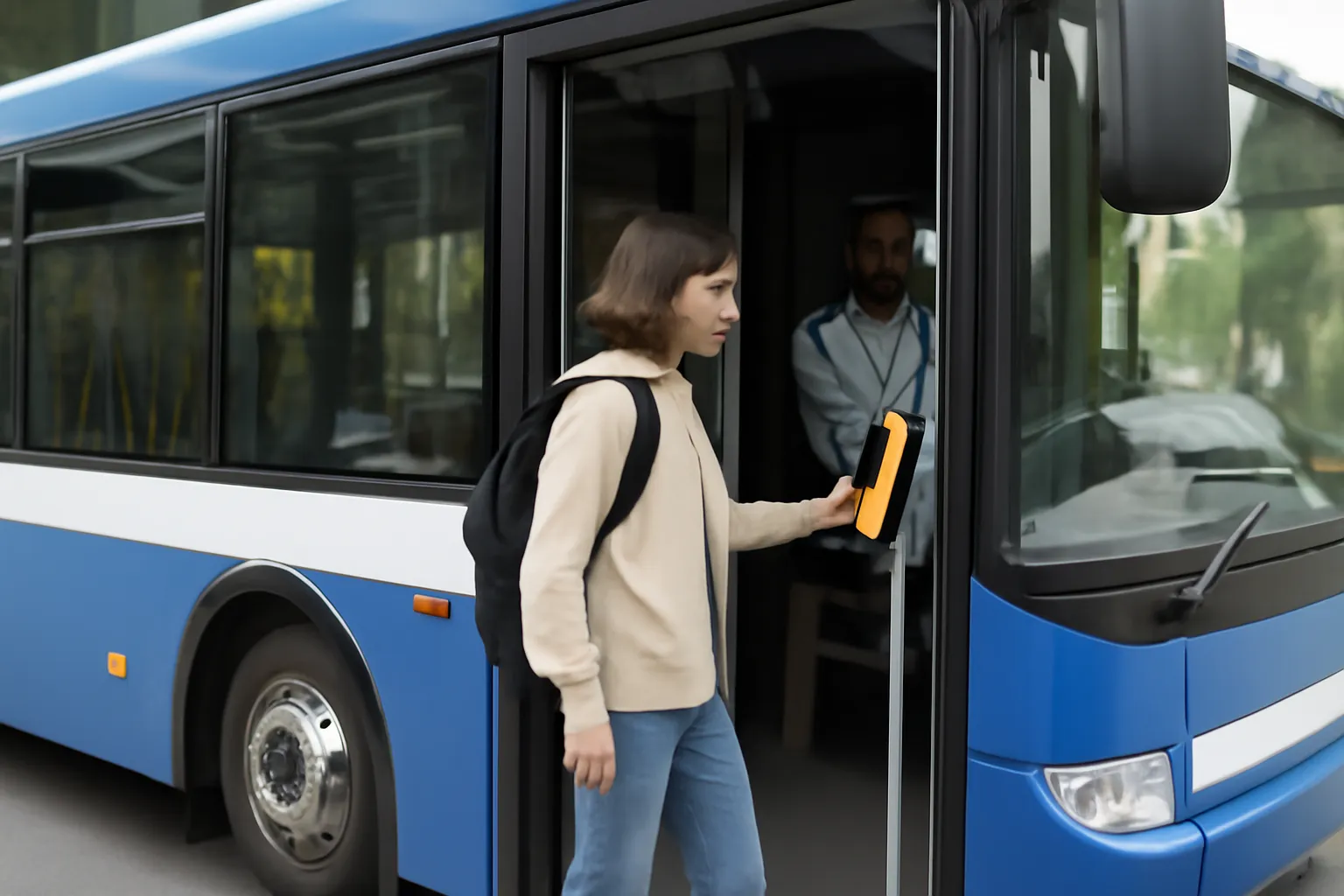Are you a high school student looking to save on transportation costs? Learn how the bus fare discount can benefit you and discover the eligibility requirements and application process to help you save money every month.
The cost of commuting can be a significant burden, especially for high school students who often rely on public transportation to get to school. However, many regions offer bus fare discounts specifically designed to ease this financial strain. These discounts not only make transportation more affordable but also encourage the use of public transit, benefiting both students and the environment. Let’s explore how high school student bus fare discounts work, their eligibility, and how students can take advantage of these programs.
High School Student Bus Fare Discounts
High school students often face the challenge of managing their finances, and transportation costs are one of the most significant expenses. Bus fare discounts are a great way to help alleviate this burden. These discounts are offered in various regions around the world, and the specific percentage or discount varies depending on the area and the public transport system in place.
How Do Bus Fare Discounts Work?
In many cities, students are eligible for discounted bus fares once they provide proof of their student status. Some areas issue student bus passes that grant students access to discounted travel rates. Others require students to register online or present a student ID to gain access to the discount. This process is typically simple and designed to make it as easy as possible for students to save on their daily commute.
For example, in several major cities like New York, London, and Tokyo, students can use discounted fare cards that offer reduced rates compared to regular adult fares. In some cases, the discount may be as high as 50% off the standard fare. These programs are not just about affordability; they also encourage students to make sustainable choices by using public transportation instead of relying on private cars.
Benefits of Bus Fare Discounts for Students
-
Financial Relief The most immediate benefit is the reduction in transportation costs. For students who rely on buses to get to school, this can mean a significant saving over the course of a semester or year.
-
Increased Accessibility By lowering the cost of commuting, bus fare discounts ensure that more students have access to education without the added burden of high transportation fees. It opens up opportunities for those from lower-income backgrounds to attend school without worrying about how they will get there.
-
Environmental Impact By encouraging the use of public transportation, bus fare discounts also contribute to reducing the carbon footprint. Fewer private cars on the road mean less pollution and less traffic, which benefits everyone.
How to Apply for a Bus Fare Discount
The process for applying for a bus fare discount varies by location, but the general steps are typically the same. Here’s how you can apply:
-
Check Eligibility Ensure you are a high school student and meet any additional requirements set by your local transportation authority. Some regions may have specific age restrictions or require students to be enrolled full-time.
-
Gather Documents Be ready to provide proof of enrollment, such as a student ID, school registration, or an official letter from the school.
-
Register for a Student Bus Pass Many cities offer online registration, where you can fill out a form and upload your documents. Once approved, you’ll receive a student bus pass or discount card that you can use to access the reduced fare.
-
Use Your Discount After receiving your student bus pass, simply tap it when boarding the bus or present it to the driver. The discount will automatically apply, and you can enjoy cheaper transportation.
Find Your Local Student Discount
High School Student Bus Fees
Understanding the standard bus fees for high school students is crucial for budgeting and planning your commute. Bus fares vary widely depending on the city and country, but knowing what to expect can help you manage your finances better.
What Are the Typical Bus Fees for Students?
In most regions, student bus fees are much lower than adult fares. For example:
-
New York City A student metrocard can cost as low as $1.50 per ride, compared to the standard adult fare of $2.75.
-
London A student Oyster card allows students to travel for just £1.50 per trip, while the regular adult fare is £2.40.
-
Tokyo Students can pay around ¥150 to ¥200 for a single bus ride, compared to the ¥300 regular fare.
These discounts can be applied to a variety of public transportation options, including buses, trams, and subways, making them a great way for students to get around their cities at an affordable rate.
Factors Affecting Bus Fees
Bus fees for students can vary based on several factors:
-
Distance The farther the destination, the higher the fare may be, though students typically receive a discount on longer routes.
-
City/Region Public transportation costs can vary significantly from one region to another. Cities with higher living costs, like New York or London, may have more substantial fare reductions for students.
-
Time of Day Some transportation authorities may offer discounts during off-peak hours to encourage ridership when buses are less crowded.
Knowing the details about your local bus fees is essential to take full advantage of student discounts. This can help you avoid surprise charges and plan your travel costs accordingly.
High School Student Bus: A Sustainable and Convenient Travel Option
Using the bus is not only a cost-effective solution but also an environmentally friendly choice. As high school students increasingly turn to public transportation, they contribute to reducing the overall environmental impact of commuting.
Why Is Bus Travel Ideal for Students?
-
Convenience Buses offer a direct, accessible way for students to get to and from school. They typically have routes that cover major educational institutions, making it easier for students to reach their destination without a hassle.
-
Environmental Sustainability By using buses, students are reducing the number of cars on the road, which leads to less pollution and better air quality. This is a simple yet effective way for students to contribute to environmental sustainability.
-
Safety Buses are a safer mode of transportation compared to driving. They have professional drivers and established routes, making them a reliable option for students.
In addition to these benefits, many bus systems are investing in eco-friendly buses, such as electric or hybrid vehicles, which further reduce the environmental impact of public transportation.
Learn More About Sustainable Travel Options
Conclusion
High school student bus fare discounts provide numerous advantages that go beyond just saving money. They help students access education, encourage sustainable travel, and promote safety on the roads. By taking advantage of these discounts, students not only improve their financial situation but also contribute positively to their communities and the environment. So next time you hop on the bus, remember that you’re not just saving money—you’re making a difference.
As the famous quote by Albert Einstein goes, “The true sign of intelligence is not knowledge but imagination.” By using public transportation, students are making an imaginative, responsible choice that benefits both their wallets and the world.






